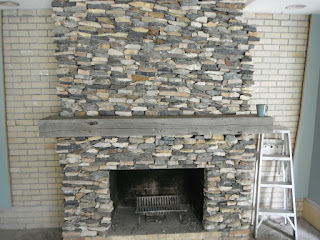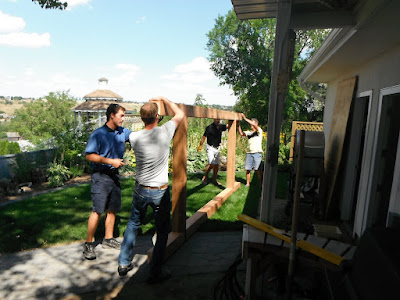Is sanding boring?
Yup.
I prefer to sand salvaged timbers by hand.
Sounds crazy?
These timbers are not flat. A belt sander won't really do the trick. One could use a random orbit sander and get into more of the contours, but in my opinion the finish is vastly inferior to sanding by hand, and not much faster. So unless you like to see tiny little circles on your work, just sand it by hand.
Now, just one of these timbers takes approximately two hours of hand-sanding to produce a decent finish (up to 120 grit), so it is important to take steps to ensure one's own comfort...
Tape your fingers.
They will get hot from the friction. They will also get blisters. I prefer a little bit of electrical tape. It stays on even when sweaty.
Expect slivers.
Old, dry timbers are not smooth. That's why we're sanding them. Keep a needle or a sharp knife (or whatever your favourite sliver-digger-outer is) on hand to remover the unwanted guest.
Wear a dust mask.
Dust matter is bad for you. Also timbers left in out in the prairie have bird s*#t on them. So you probably don't want that in your lungs.
Don't work so hard.
Change the paper when it gets dull. Also change the hand that you are sanding with. One the first things that you will notice getting fatigued is your fingers. The constant pressure exerted at the end of your digits will catch up to you quickly. The solution? Don't press down on your fingers. Instead, use your other hand as a weight. Rest it on top of your sanding hand's fingers. The weight from this hand is often enough for the sandpaper to work. No extra pressure required.
Turn your brain off.
You are not going to need it here. Best to save it for other things.
Bye bye!






















